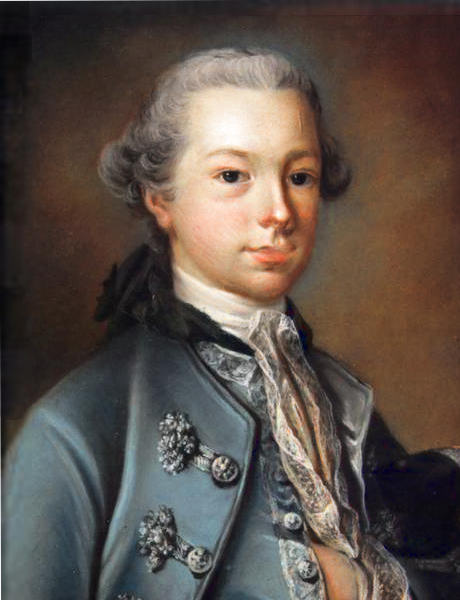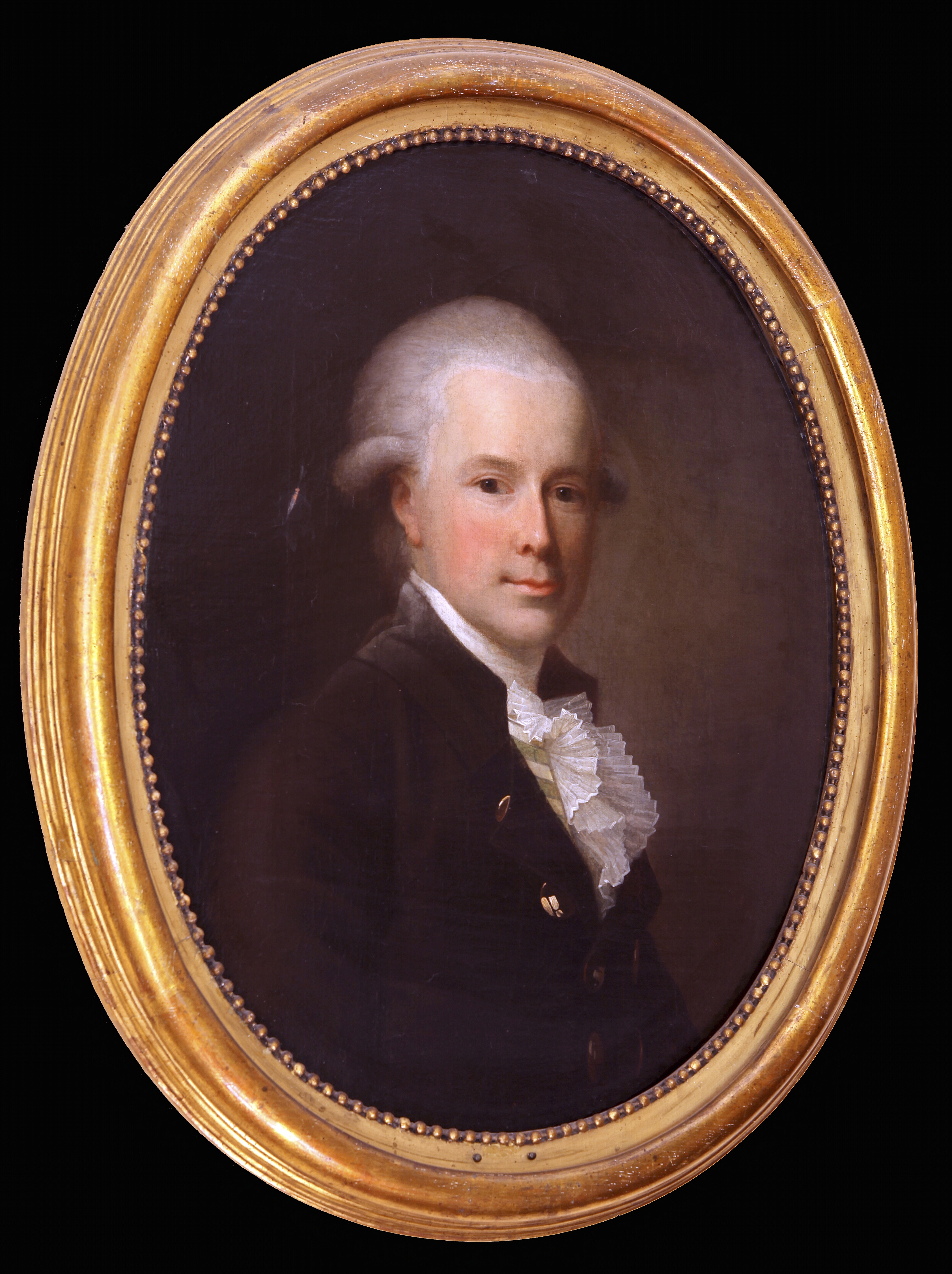Antoine De La Calmette on:
[Wikipedia]
[Google]
[Amazon]
 Gérard Pierre Antoine de Bosc de la Calmette, often referred to as Antoine de la Calmette, (21 September 1752 – 7 April 1803) was a
Gérard Pierre Antoine de Bosc de la Calmette, often referred to as Antoine de la Calmette, (21 September 1752 – 7 April 1803) was a
''Dansk Biografisk Leksikon''. Retrieved 10 December 2012.
 In 1769, Calmette held the rank of
In 1769, Calmette held the rank of
 Calmette was a figure of his time, inspired by the Age of Enlightenment and by philosophers such as Jean-Jacques Rousseau. He had also taken a specific interest in the gardens and parks of England and France. While he was a competent draftsman and painter, his masterpiece was the layout and landscaping of Sømarkegård, renamed Liselund after his wife. In 1783, together with his wife, he developed a
Calmette was a figure of his time, inspired by the Age of Enlightenment and by philosophers such as Jean-Jacques Rousseau. He had also taken a specific interest in the gardens and parks of England and France. While he was a competent draftsman and painter, his masterpiece was the layout and landscaping of Sømarkegård, renamed Liselund after his wife. In 1783, together with his wife, he developed a
Kultur Styreksen. Retrieved 10 December 2012. While he entrusted Andreas Kirkerup with the design of the garden's centerpiece, a thatched manor serving as a summer residence, it was Calmette himself who developed the garden, bringing in rare plants, shrubs and trees, all carefully laid out in accordance with a detailed plan. His knowledge of architecture also seems to have contributed to the design of the various buildings around the park. He was certainly inspired to design the Chinese pavilion after visiting Copenhagen's Frederiksberg Park as can be seen from his drawing of the park's Chinese pavilion and bridge (c. 1798). Calmette and his wife spent ten years laying out the garden which was completed only four years before his death. Bosc de la Calmette died in Copenhagen; he and his wife are buried in a chapel in"Gérard Pierre Antoine de Bosc de la Calmette"
Gravested.dk. Retrieved 10 December 2012.
File:LiselundLystslot.jpg, The thatched summer residence at Liselund
File:Liselund Kinesiske lysthus.JPG, The Chinese summer house, Liselund
File:Marienborg Møn 1.jpg, Marienborg, Calmette's residence on Møn
Ulla Kjær, ''En virkeliggjort drøm: Oplysningstiden illustreret ved Liselund''
(A dream come true: The Age of Enlightenment illustrated by Liselund). Danish text with many excellent illustrations. {{DEFAULTSORT:Bosc de la Calmette Danish painters Danish landscape architects Danish military officers People from Lisbon People from Møn French emigrants to Denmark Noble Knights of the Order of the Dannebrog 1752 births 1803 deaths
 Gérard Pierre Antoine de Bosc de la Calmette, often referred to as Antoine de la Calmette, (21 September 1752 – 7 April 1803) was a
Gérard Pierre Antoine de Bosc de la Calmette, often referred to as Antoine de la Calmette, (21 September 1752 – 7 April 1803) was a Danish
Danish may refer to:
* Something of, from, or related to the country of Denmark
People
* A national or citizen of Denmark, also called a "Dane," see Demographics of Denmark
* Culture of Denmark
* Danish people or Danes, people with a Danish ance ...
County Governor, geheimrat, and landowner. He is, however, remembered above all as an artist and landscape architect
A landscape architect is a person who is educated in the field of landscape architecture. The practice of landscape architecture includes: site analysis, site inventory, site planning, land planning, planting design, grading, storm water manageme ...
, contributing to Danish Romanticism, especially in the design of Liselund on the island of Møn
Møn () is an island in south-eastern Denmark. Until 1 January 2007, it was a municipality in its own right but it is now part of the municipality of Vordingborg, after merging with the former municipalities of Langebæk, Præstø, and Vordingbo ...
with its English garden, thatched summer residence and distributed buildings in various styles."Antoine de la Calmette"''Dansk Biografisk Leksikon''. Retrieved 10 December 2012.
Early life
Born inLisbon
Lisbon (; pt, Lisboa ) is the capital and largest city of Portugal, with an estimated population of 544,851 within its administrative limits in an area of 100.05 km2. Grande Lisboa, Lisbon's urban area extends beyond the city's administr ...
, Portugal, Calmette was the son of the Dutch resident minister of the States-General to Portugal, Charles François de Bosc de la Calmette, a Huguenot who had left France to avoid religious persecution. His mother was Antoinette Elisabeth de Godin. During the 1755 Lisbon earthquake
The 1755 Lisbon earthquake, also known as the Great Lisbon earthquake, impacted Portugal, the Iberian Peninsula, and Northwest Africa on the morning of Saturday, 1 November, Feast of All Saints, at around 09:40 local time. In combination with ...
, he was with his brother, Charles Louis de Bosc de la Calmette; they were saved by their governess who rescued them from a burning building. He came with his parents to Denmark in 1759 when his father was transferred to Copenhagen.
About 1770, the Calmette family acquired the 15th century royal farm of Sømarkegård, a swampy area at the northeastern end of Møns Klint. The father also acquired Marienborg Manor
Marienborg Manor is an estate on the Danish island of Møn. The estate has a large park with public access. The main building was demolished in 1984. The estate, covering , contains the thatched tenant farm of Egeløkke. Manorial records exist f ...
on Møn which he left to Antoine when he died in 1781.
In 1777, Calmette married Anna Catharina Elisabeth (Lisa) Baroness Iselin (1759-1805), the daughter of Reinhard Iselin
Reinhard Iselin (4 August 1714 – 10 April 1781) was a Danish merchant, shipowner and industrialist who founded Reinhard Iselin & Co. in Copenhagen in 1749. The company completed 65 expeditions to the Danish West Indies. Iselin was also active in ...
, a highly successful Swiss merchant employed by the Danish State. In 1781, she inherited Rosenfeldt Manor
Rosenfeldt Manor is a manor house and estate located just west of Vordingborg, Vordingborg Municipality, some 90 km south of Copenhagen, Denmark. One of 12 new manors created when Vordingborg Cacalry District was dissolved in 1774, its first owner ...
, just west of Vordingborg.
Career
 In 1769, Calmette held the rank of
In 1769, Calmette held the rank of Cornet
The cornet (, ) is a brass instrument similar to the trumpet but distinguished from it by its conical bore, more compact shape, and mellower tone quality. The most common cornet is a transposing instrument in B, though there is also a sopr ...
. In 1772, he served as captain of a cavalry regiment. In 1774, he was appointed chamberlain, and in 1777, he was naturalized as a Danish nobleman. In 1783, he became governor of Møn (''Møn Amt'') and in 1794, also of Nykøbing. In 1793 (or 1801), he received the Order of the Dannebrog
The Order of the Dannebrog ( da, Dannebrogordenen) is a Danish order of chivalry instituted in 1671 by Christian V. Until 1808, membership in the order was limited to fifty members of noble or royal rank, who formed a single class known a ...
. Calmette also took an interest in prehistoric monuments, excavating Møn's Neolithic burial mound, Klekkende Høj
Klekkende Høj is a megalithic tomb on the island of Møn in Denmark. It takes its name from its location near the village of Klekkende. "Høj" stems from the Old Norse word ''haugr'' (Swedish "hög"), meaning hill, mound or barrow.
Burial mound ...
, in 1797 while he was governor. In 1803, he was elevated to the position of Geheimrat.
Contribution to art
Romantic
Romantic may refer to:
Genres and eras
* The Romantic era, an artistic, literary, musical and intellectual movement of the 18th and 19th centuries
** Romantic music, of that era
** Romantic poetry, of that era
** Romanticism in science, of that e ...
garden with winding paths, lakes and canals, and buildings of various styles, fully in accordance with the ideals of the times. While travelling widely across Europe in 1790, he had been attracted by the style of the romantic English landscape garden, a favourite with the nobility of the day. Here nature was allowed to thrive in large parks studded with monuments, temples and ornamental buildings."Klekkendehøj"Kultur Styreksen. Retrieved 10 December 2012. While he entrusted Andreas Kirkerup with the design of the garden's centerpiece, a thatched manor serving as a summer residence, it was Calmette himself who developed the garden, bringing in rare plants, shrubs and trees, all carefully laid out in accordance with a detailed plan. His knowledge of architecture also seems to have contributed to the design of the various buildings around the park. He was certainly inspired to design the Chinese pavilion after visiting Copenhagen's Frederiksberg Park as can be seen from his drawing of the park's Chinese pavilion and bridge (c. 1798). Calmette and his wife spent ten years laying out the garden which was completed only four years before his death. Bosc de la Calmette died in Copenhagen; he and his wife are buried in a chapel in
Damsholte Church
Damsholte Church, located in the village of Damsholte on the island of Møn in southeastern Denmark, is the only village church in the country built in the Rococo style. It is considered to be one of Denmark's finest Rococo buildings.
History
Da ...
yard, adjacent to Marienborg on Møn.Gravested.dk. Retrieved 10 December 2012.
References
External links
Ulla Kjær, ''En virkeliggjort drøm: Oplysningstiden illustreret ved Liselund''
(A dream come true: The Age of Enlightenment illustrated by Liselund). Danish text with many excellent illustrations. {{DEFAULTSORT:Bosc de la Calmette Danish painters Danish landscape architects Danish military officers People from Lisbon People from Møn French emigrants to Denmark Noble Knights of the Order of the Dannebrog 1752 births 1803 deaths